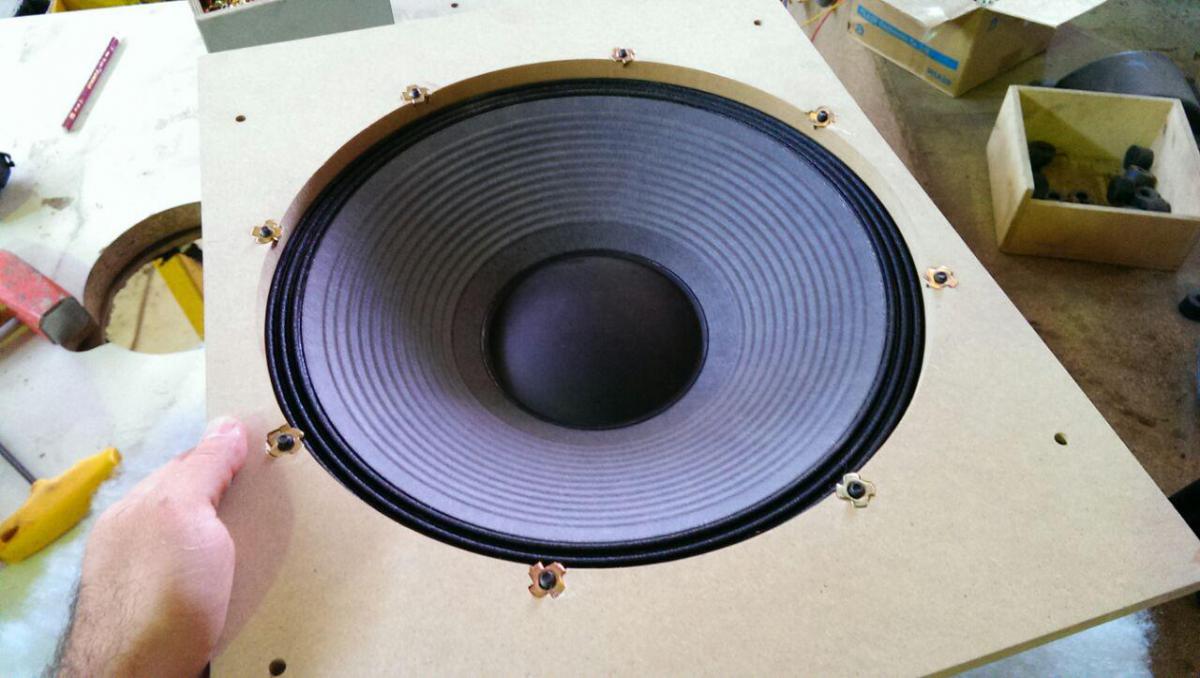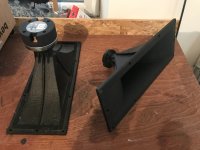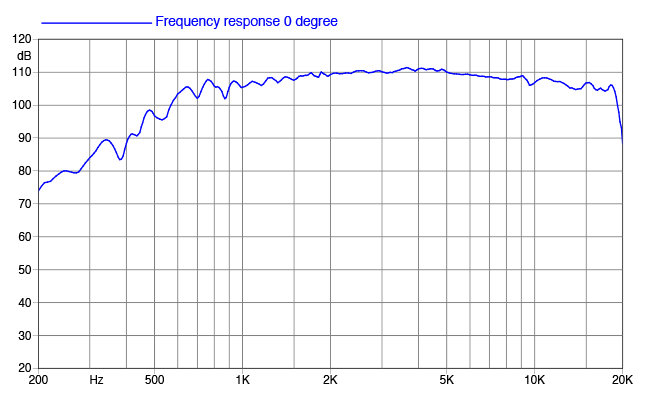Charles,
I agree, this almost has to be a Beyma (cone).
12 cone ribs, triple roll surround, same dustcap including glue edge, same distance from dustcap to first rib.

FWIW:
Linear elongation of the membrane X max: ± 9.00 mm
Value of the database, X max PP: 18.00 mm (2 * X max).
I agree, this almost has to be a Beyma (cone).
12 cone ribs, triple roll surround, same dustcap including glue edge, same distance from dustcap to first rib.

FWIW:
Linear elongation of the membrane X max: ± 9.00 mm
Value of the database, X max PP: 18.00 mm (2 * X max).
Last edited:
I know that there is a value of +-9mm in the data-sheet. But the voice-coil overhang is just 10mm in total. Beyma applies a generous percentage of the plate-thickness to that for the calculation of x-max. That might be good for a pure PA sub usage but used as a midwoofer in home listening I definitley regard them as +-5 mm x-max capable drivers.
Regards
Charles
Regards
Charles
Where can you buy they them for that price in Europe? A quick google and I found only the AK version.but it's good especially at the current sale price
I know that there is a value of +-9mm in the data-sheet. But the voice-coil overhang is just 10mm in total. Beyma applies a generous percentage of the plate-thickness to that for the calculation of x-max. That might be good for a pure PA sub usage but used as a midwoofer in home listening I definitley regard them as +-5 mm x-max capable drivers.
Regards
Charles
True!
Where can you buy they them for that price in Europe? A quick google and I found only the AK version.
Here. You need an account and you receive a discount if you order more pieces.
Attachments
Last edited:
Thanks...saw your earlier post. Got the STH-100But don't try this
Thanks very much. I have an account there already...so cool.Here. You need an account and you receive a discount if you order more pieces.
The 15P80Nd is a very nice driver, but also quite expensive.
In my country (and for HiFi applications), I would buy a pair of 15FH500s instead of one 15P80Nd and still have some money left over.
I guess the Beyma would crush the old 2226H though.
Your are correct about the price (probably diminishing return) but I dont have the wife acceptance for two 16ohm woofers (for 8 parallel your were probably referring to).
Bummer. Ordered and paid. Got refunded. Prices are up. Looks like it was a mistake on their website.
Too bad.
Prices presumably applied to drivers in stock.
I believe the French guy bought a pair at the low price.
I was referring to a pair for two 2-ways
2 x 8 ohm in parallel would be perfect for a MEH (> future project).
The woofer you said is 16ohm I think. Maybe I misread! (That is way I said 16 and 16 in parallel) ill check.
I accidentally referred to the 16 ohm version, not intentionally.
Following the route of Faital vs the world...
DE250 vs a good Faital? (1in)
Impression of prototype 2-way with Fatial Pro HF108R - 16 ohms mounted to LTH102 & Faital Pro 12PR320 - 8 ohms.
1 kHz is a critical XO point for a 1" driver. The Beyma CP380M takes it easily, even crossed slightly lower.
Other 1" drivers, like the BMS I have, don't sound so good around 1 Khz.
For 900Hz and below, I would always use a larger diaphram (>1.75").
Much depends on the horn though > in general, a bigger horn facilitates a lower xo point.
1 kHz is a critical XO point for a 1" driver. The Beyma CP380M takes it easily, even crossed slightly lower.
Other 1" drivers, like the BMS I have, don't sound so good around 1 Khz.
For 900Hz and below, I would always use a larger diaphram (>1.75").
Much depends on the horn though > in general, a bigger horn facilitates a lower xo point.
Last edited:
What? It's a great driver (I've actually owned heaps of them).got some bad comments for the 2226h I had as a first choice
Do you have some actual evidence that it's a substantially better driver?I guess the Beyma would crush the old 2226H though.
I have never heard a 15p80nd but I guess it will have a cleaner (in terms of breakup modes) midrange and better extension at its upper end due to the curvilinear cone. The efficiency is also a little higher. But that comes at the cost of low-end extension.
The 2226 is still a very well engineered driver with its shorting rings etc. I have two of these and I must say that the manufacturing quality is very high (so is the quality of my Beyma Woofers BTW). At the lower end it will most likely outperform a 15p80nd.
In terms of sheer low end power there will be a lot of drivers form Southern Europe that will beat a 2226. But that is most probably not very relevant for home-use - or is it ? If you compare datasheets you have to keep in mind that a lot a driver manufacturers measure distortion at one watt. JBL measures THD at 10% of its nominal power (at least for the 2226). A lot of drivers have THD levels at 1 Watt in the same order of magnitude than the 2226 at 60 Watts which speaks for the linearity of its motor.
Regards
Charles
The 2226 is still a very well engineered driver with its shorting rings etc. I have two of these and I must say that the manufacturing quality is very high (so is the quality of my Beyma Woofers BTW). At the lower end it will most likely outperform a 15p80nd.
In terms of sheer low end power there will be a lot of drivers form Southern Europe that will beat a 2226. But that is most probably not very relevant for home-use - or is it ? If you compare datasheets you have to keep in mind that a lot a driver manufacturers measure distortion at one watt. JBL measures THD at 10% of its nominal power (at least for the 2226). A lot of drivers have THD levels at 1 Watt in the same order of magnitude than the 2226 at 60 Watts which speaks for the linearity of its motor.
Regards
Charles
Last edited:
- Home
- Loudspeakers
- Multi-Way
- Is it possible to cover the whole spectrum, high SPL, low distortion with a 2-way?




